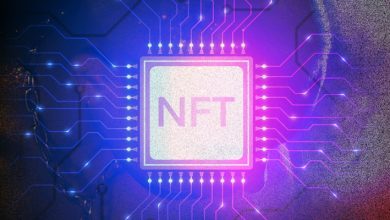How Layer 2 Solutions Are Impacting Blockchain Adoption

- Understanding the need for layer 2 solutions in blockchain technology
- Exploring the benefits of layer 2 solutions for scalability and speed
- Case studies of successful implementation of layer 2 solutions in blockchain projects
- Challenges and limitations of layer 2 solutions in the current blockchain ecosystem
- Comparing layer 2 solutions to other scaling solutions in the blockchain space
- Future outlook: the role of layer 2 solutions in mainstream blockchain adoption
Understanding the need for layer 2 solutions in blockchain technology
One of the key challenges facing blockchain technology is scalability. As the number of transactions on the blockchain increases, it becomes more difficult for the network to process them in a timely manner. This can lead to congestion and higher fees, making it less efficient and cost-effective for users.
Layer 2 solutions offer a way to address these scalability issues by moving some of the transaction processing off-chain. By doing so, they can significantly increase the network’s capacity and speed, while reducing fees and improving overall performance. This is achieved by creating a secondary layer on top of the main blockchain, where transactions can be processed more quickly and at a lower cost.
Implementing layer 2 solutions can help blockchain technology reach its full potential by making it more accessible and user-friendly. This can attract more users and developers to the ecosystem, driving adoption and innovation. It also opens up new possibilities for applications that require high transaction throughput, such as decentralized finance (DeFi) and non-fungible tokens (NFTs).
Overall, understanding the need for layer 2 solutions in blockchain technology is crucial for realizing the full benefits of this revolutionary technology. By addressing scalability issues and improving performance, these solutions can help blockchain networks become more efficient, secure, and widely adopted.
Exploring the benefits of layer 2 solutions for scalability and speed
Layer 2 solutions play a crucial role in addressing scalability and speed issues in blockchain technology. By offloading transactions from the main chain to a secondary layer, these solutions help reduce congestion and optimize performance. One of the key benefits of layer 2 solutions is their ability to increase transaction throughput, enabling more transactions to be processed simultaneously. This scalability enhancement is essential for blockchain networks to support a growing user base and handle increasing transaction volumes efficiently.
Moreover, layer 2 solutions can significantly reduce transaction costs by minimizing the fees associated with on-chain transactions. By moving transactions off-chain, users can enjoy lower fees and faster processing times, making blockchain technology more accessible and cost-effective. This cost reduction is particularly beneficial for decentralized applications (dApps) and microtransactions, where high fees on the main chain can hinder usability and adoption.
Another advantage of layer 2 solutions is their ability to improve transaction finality and confirmation times. By leveraging technologies such as state channels and sidechains, these solutions enable instant transactions that do not require extensive validation on the main chain. This near-instantaneous settlement provides a seamless user experience and enhances the overall efficiency of blockchain networks.
Overall, the benefits of layer 2 solutions for scalability and speed are clear. By alleviating congestion on the main chain, reducing transaction costs, and enhancing transaction finality, these solutions are driving the widespread adoption of blockchain technology across various industries. As blockchain continues to evolve and mature, layer 2 solutions will play a vital role in optimizing performance and unlocking the full potential of decentralized systems.
Case studies of successful implementation of layer 2 solutions in blockchain projects
Layer 2 solutions have been crucial in enhancing the scalability and efficiency of blockchain projects. Here are some case studies showcasing successful implementation of layer 2 solutions:
- The Lightning Network: This layer 2 solution has been instrumental in enabling faster and cheaper transactions on the Bitcoin blockchain. By moving transactions off-chain, the Lightning Network reduces congestion on the main blockchain and allows for near-instant payments.
- Loopring: Loopring is a layer 2 protocol built on top of Ethereum that focuses on decentralized exchanges. By using zkRollups, Loopring is able to significantly increase the throughput of transactions while reducing gas fees for users.
- Optimism: Optimism is a layer 2 scaling solution for Ethereum that leverages optimistic rollups to increase transaction throughput. By batching transactions off-chain and submitting them to the main chain as a single proof, Optimism reduces congestion and gas costs.
- Skale Network: Skale Network is a layer 2 solution that enables developers to create decentralized applications with high performance. By utilizing sidechains, Skale Network can process transactions in parallel, increasing the overall capacity of the blockchain network.
These case studies demonstrate the tangible benefits of layer 2 solutions in blockchain projects, driving increased adoption and usability across various applications and use cases.
Challenges and limitations of layer 2 solutions in the current blockchain ecosystem
Layer 2 solutions have shown great potential in addressing scalability issues in the blockchain ecosystem. However, there are several challenges and limitations that need to be considered. One of the main challenges is the complexity of implementing these solutions. Not all blockchain projects have the expertise or resources to successfully integrate layer 2 solutions into their existing infrastructure. This can lead to delays in adoption and hinder the overall growth of the technology.
Another limitation is the interoperability of different layer 2 solutions. As there are multiple approaches to scaling on layer 2, compatibility issues may arise when trying to connect different networks or applications. This can create fragmentation within the ecosystem and limit the benefits of scalability that layer 2 solutions promise to deliver.
Additionally, security concerns are another important factor to consider. While layer 2 solutions can improve transaction speed and reduce costs, they may also introduce new vulnerabilities that could be exploited by bad actors. Ensuring the security of these solutions is crucial to maintaining user trust and confidence in the technology.
Moreover, there is a lack of standardization in the development of layer 2 solutions. This can make it challenging for developers to build applications that are compatible with different scaling solutions. Without clear guidelines and best practices, the ecosystem may become fragmented, hindering widespread adoption and interoperability.
In conclusion, while layer 2 solutions offer a promising way to scale blockchain technology, there are several challenges and limitations that need to be addressed. By overcoming these obstacles and working towards greater standardization and security, the blockchain ecosystem can fully realize the potential of layer 2 solutions and drive further adoption of the technology.
Comparing layer 2 solutions to other scaling solutions in the blockchain space
Layer 2 solutions are being compared to other scaling solutions in the blockchain space to determine their impact on adoption. These comparisons help to understand the strengths and weaknesses of each approach and how they contribute to the overall scalability of blockchain networks.
One common comparison is between layer 2 solutions and on-chain scaling solutions. Layer 2 solutions, such as state channels and sidechains, involve conducting transactions off the main blockchain to reduce congestion and increase throughput. On the other hand, on-chain scaling solutions like increasing block sizes or implementing sharding aim to improve scalability directly on the main blockchain.
Another comparison is with off-chain scaling solutions, which involve conducting transactions completely off the blockchain. While layer 2 solutions still rely on the security of the main blockchain, off-chain solutions like centralized exchanges or payment channels operate independently from the blockchain. These comparisons highlight the trade-offs between security, decentralization, and scalability in different scaling approaches.
Overall, layer 2 solutions offer a promising middle ground between on-chain and off-chain scaling solutions. By leveraging the security of the main blockchain while increasing transaction throughput and reducing fees, layer 2 solutions provide a scalable and efficient way to improve blockchain adoption. As the technology continues to evolve, it will be interesting to see how layer 2 solutions further impact the scalability and usability of blockchain networks.
Future outlook: the role of layer 2 solutions in mainstream blockchain adoption
In the future, layer 2 solutions are poised to play a crucial role in driving mainstream adoption of blockchain technology. These solutions offer scalability and efficiency improvements that can address the current limitations of blockchain networks, such as high transaction costs and slow confirmation times. By moving some of the processing off-chain to layer 2, blockchain platforms can significantly increase their throughput and reduce congestion on the main chain.
Layer 2 solutions also have the potential to make blockchain technology more accessible to a wider range of users and applications. With faster and cheaper transactions, businesses and individuals alike can take advantage of the benefits of blockchain without being hindered by its current limitations. This increased usability could drive greater adoption of blockchain technology across various industries, from finance to supply chain management.
As layer 2 solutions continue to evolve and mature, we can expect to see even more innovative applications of blockchain technology. From decentralized finance (DeFi) platforms to non-fungible tokens (NFTs) and beyond, layer 2 solutions are unlocking new possibilities for what can be achieved on the blockchain. This increased functionality and versatility will only serve to further drive adoption and integration of blockchain technology into our daily lives.
Overall, the future outlook for layer 2 solutions in mainstream blockchain adoption is bright. As these solutions continue to improve and expand, they will play an increasingly important role in shaping the future of blockchain technology. By addressing the scalability and efficiency challenges that have held back widespread adoption, layer 2 solutions are paving the way for a more inclusive and accessible blockchain ecosystem. With their potential to unlock new use cases and applications, layer 2 solutions are set to revolutionize the way we think about blockchain technology.



